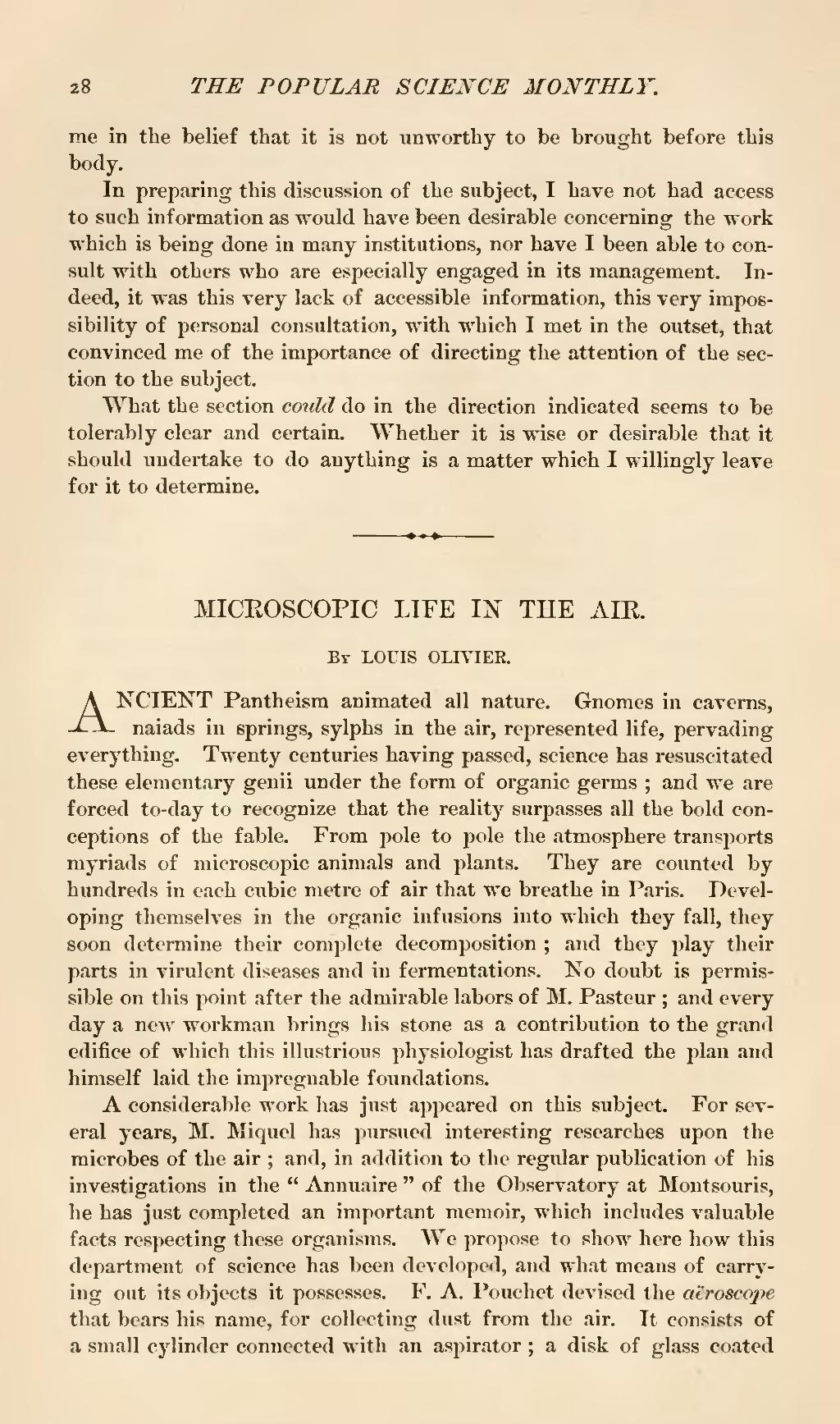me in the belief that it is not unworthy to be brought before this body.
In preparing this discussion of the subject, I have not had access to such information as would have been desirable concerning the work which is being done in many institutions, nor have I been able to consult with others who are especially engaged in its management. Indeed, it was this very lack of accessible information, this very impossibility of personal consultation, with which I met in the outset, that convinced me of the importance of directing the attention of the section to the subject.
What the section could do in the direction indicated seems to be tolerably clear and certain. Whether it is wise or desirable that it should undertake to do anything is a matter which I willingly leave for it to determine.
| MICROSCOPIC LIFE IN THE AIR. |
By LOUIS OLIVIER.
ANCIENT Pantheism animated all nature. Gnomes in caverns, naiads in springs, sylphs in the air, represented life, pervading everything. Twenty centuries having passed, science has resuscitated these elementary genii under the form of organic germs; and we are forced to-day to recognize that the reality surpasses all the bold conceptions of the fable. From pole to pole the atmosphere transports myriads of microscopic animals and plants. They are counted by hundreds in each cubic metre of air that we breathe in Paris. Developing themselves in the organic infusions into which they fall, they soon determine their complete decomposition; and they play their parts in virulent diseases and in fermentations. No doubt is permissible on this point after the admirable labors of M. Pasteur; and every day a new workman brings his stone as a contribution to the grand edifice of which this illustrious physiologist has drafted the plan and himself laid the impregnable foundations.
A considerable work has just appeared on this subject. For several years, M. Miquel has pursued interesting researches upon the microbes of the air; and, in addition to the regular publication of his investigations in the "Annuaire" of the Observatory at Montsouris, he has just completed an important memoir, which includes valuable facts respecting these organisms. We propose to show here how this department of science has been developed, and what means of carrying out its objects it possesses. F. A. Pouchet devised the aëroscope that bears his name, for collecting dust from the air. It consists of a small cylinder connected with an aspirator; a disk of glass coated
